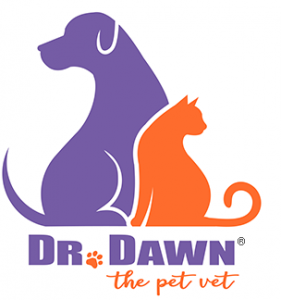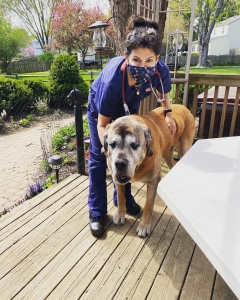
I have posted blogs in the past about how to care for and treat aging pets. I have shared other posts about the beauty of old dogs. I have detailed supplements to help slow down aging, and things to look for in your pets to help them age gracefully, with as much quality of life as possible. The physical needs are obvious and often easier to treat than the psychological and behavioral changes that challenge them and the families that live with them.
At this point in my dog’s life, all of these issues are front and center for me, my family, and my dog India. She is solidly in the senior dog stage of her life, at 13 1/2 years of age. There are several charts, and even studies that have tried to quantitate how many human years that would be. Suffice it to say, for me, as a pet parent and a veterinarian, I don’t need to multiply her age by 7, or do an even more elaborate calculation such as the one in a recent paper, that involved knowing the “natural log” of your dog (what even is that?). I know she’s old. As a general rule, senior cats are those over 15 years of age, while dogs vary in their lifespan based on their size. Giant breeds such as Mastiffs may be senior at 8, while Chichihua is senior closer to 12 years of age.
Most important to keep in mind: Age is not a disease.
As a veterinarian, it is key to establish a good relationship with pet parents, help them recognize signs of aging, and come to grips with the fact that their pet is older, and prepare them to give those pets the best care, for the last part of their pets’ lives. Sadly, I am acutely aware of those discussions, because I am having them with my own family. It is important for everyone in a family to be on the same page in terms of what they are physically willing to do to provide the necessary care to maintain a quality of life for their pet. They need to determine realistically what they are financially willing to provide for medical and physical needs of their pet. And, they need to emotionally be able to handle the care and understand that death is inevitable.
Quality is always more important than quantity.
Age should not determine euthanasia, if it comes to that. Progressive, untreatable disease should.
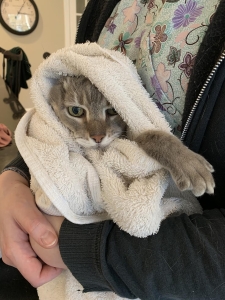
This blog is not intended to discuss medications and dosages, nor supplements, in detail. It is more about the management of these pets, and being able to recognize changes in their physical appearance, mentation, and emotional well-being as it evolves in the aging process.
I will say, going through it myself is so hard. I have had pets my entire life, and treated pets for decades. As an adult, I have had dogs that suffered diseases that did not allow them to live to ripe old ages. Veterinarians like myself have pets that seem to be stricken with more issues, and my dog India has survived to an older age than most of my previous pets. I am older as well, and she has been the empty nest soulmate that has gotten me through three children leaving for college, and for their adult lives. I am not suggesting that pets are more loved and supportive to people as they are older, but for me, this is a challenging stage of my life, and she has been a huge help to me. And I know I am not alone.
I recall a year ago coming to the “sudden” realization that she was senior. For some reason, I was in denial … wasn’t she 7 years old a minute ago?! India has had, and continues to have, several disease issues at once. We call them comorbidities… and it is very common for most of my senior patients to have several things going on as well as the physical and cognitive signs of aging. Your vet will select a plan, taking into account what medications your pet may be on.
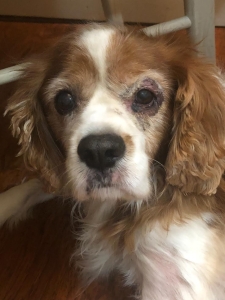
There certainly are physical signs of aging in senior pets that you can look for (and not ignore if you are like me).
– Arthritis
– Muscle loss due to aging, where the spine is more prominent (known as sarcopenia)
– Muscle atrophy secondary to arthritis
– Degenerative aging (sight and hearing loss)
– Metabolic comorbidities which may or may not have conflicting treatment options (hyper or hypothyroidism, heart disease, cancer for eg.)
– Decreased ability to smell, taste and see
Ways to enhance their PHYSICAL needs:
– Massage
-Assisted grooming
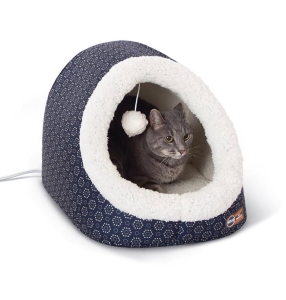
-Heated beds with pet safe pads, or cuddle discs
-Softer bedding/orthopedic beds, to prevent pressure sores
– Stairs to assist getting up and down off furniture, and ramps to help navigate steep steps. Carriages can help dogs and cats “go on walks” just like they used to, if unable to walk due to back or arthritis issues.

– Lower sided litter boxes for cats, or even puppy pans, to alleviate or lower inappropriate litter issues often seen
-Have bedding, along with food/water, or litter boxes close to each other (but not directly next to each other)
-PLAY! Movement is key to keeping the joints, ligaments, tendons and muscles from seizing up and further causing muscle atrophy. Games on smart phones, such as laser tag, and food puzzles stimulate the body and mentation.
– Joint supplements(glucosamine based), CBD, Coenzyme Q10, Vitamins E, C and A, Fatty acids and Omega acid supplements, etc.
-Complementary therapies such as tPEMF(Assisi Loop), acupuncture or Traditional Chinese Medicine (TCM), and laser. Your vet can explain these and go into further details.
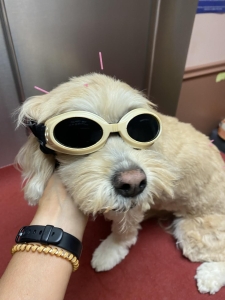
– Additional lighting for pets whose vision is challenged. It can lower stress.
-Add more hand gestures to speaking language to aid in pets with hearing loss from age.
– Heat food to increase the smell of it, which enhances the aroma and increases palatability. Senior pets need protein rich diets to maintain muscle mass… discuss with your vet depending on other disease contraindications.
– 3-4 visits a year to your vet, and discuss which vaccines are necessary, depending on any illness your pet may have.
Behavioral changes to look for in senior pets may be subtle. When pets are incorrectly determined to be ornery, aggressive, or short-tempered because of age… it is an opportunity to teach owners to identify underlying issues that could be causing those behaviors; both physical and emotional.
-Stress can cause pets to either “pull away” in affection, or the converse, and your pet may be more needy and attached you like “velcro”.
-Not every senior pet wants a kitten or puppy brought into the home. They may not appreciate children, nor a new spouse, partner, baby or move to a new home. Is someone ill in the home or are their other emotional hardships that the pet is noticingAll can be stressors.
Cognitive determination
There is an anagram we use to rule out cognitive dysfunction, or senility, in our pets, known as DISHA, or (DISHAA).
Disorientation
Interactions
Sleep-wake cycle disturbances
House soiling
Activity
Anxiety
You may also see excessive vocalization (this is a big issue in my home, especially at night, and is very common and associated with the sleep-wake cycle disturbances common to seniors). As well, you may notice altered response to stimuli, decreased self-hygeine (especially in cats), and alterations in appetite.
There are medications and supplements that can aid with some of these cognitive decline issues. See my prior blog for details,
https://drdawnthepetvet.com/senility-dementia-and-alzheimers-in-dogs-and-cats/
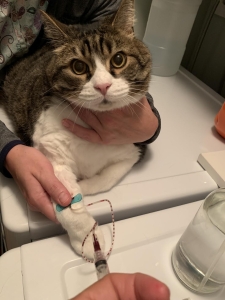
-Routine bloodwork can determine if metabolic disease is present. For example, untreated thyroid disease in cats can cause blindness. Sometimes metabolic disease symptoms can thus mimic dementia.
-Radiographs may be needed to confirm presence and severity of arthritis, which can cause sleep disturbances as they try to reposition to get more comfortable.
How to address Emotional/Cognitive needs :
– ROUTINE.. stick to it!
-Attention to cleanliness, especially with cats. Grooming plays a large role in their feeling well.
– Physical touch and love (petting and personal attention time)
-Familiarity with environment (minimize changes). Ie, this is not the time to rearrange furniture.
– Minimize boredom (sleep is a common reflex to boredom and being ignored)
– Play, to further reduce chances of boredom.
– Pharmaceuticals/nutraceuticals/pheromones for dementia (see above referenced blog).
Overall, it is important to be attuned to your pet to be able to give them their best life as seniors.
Best,
Dr. Dawn
